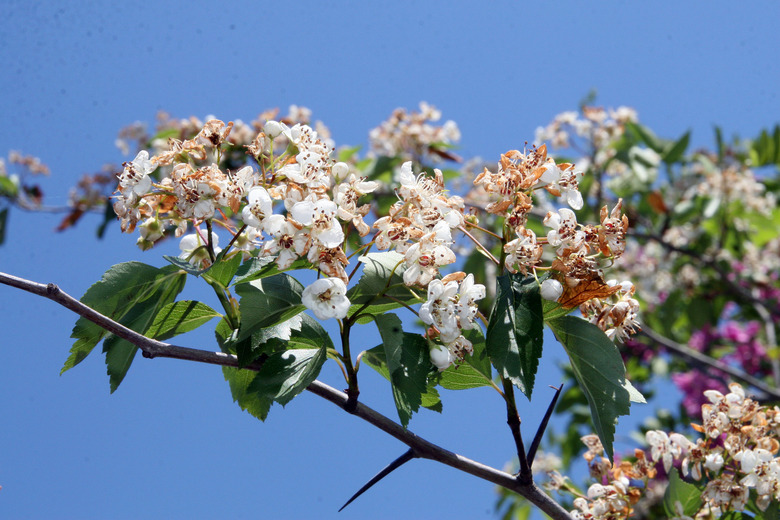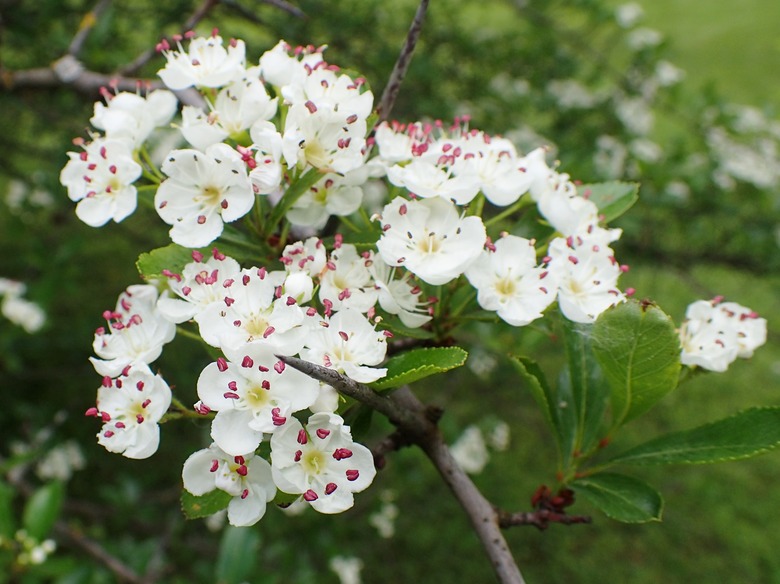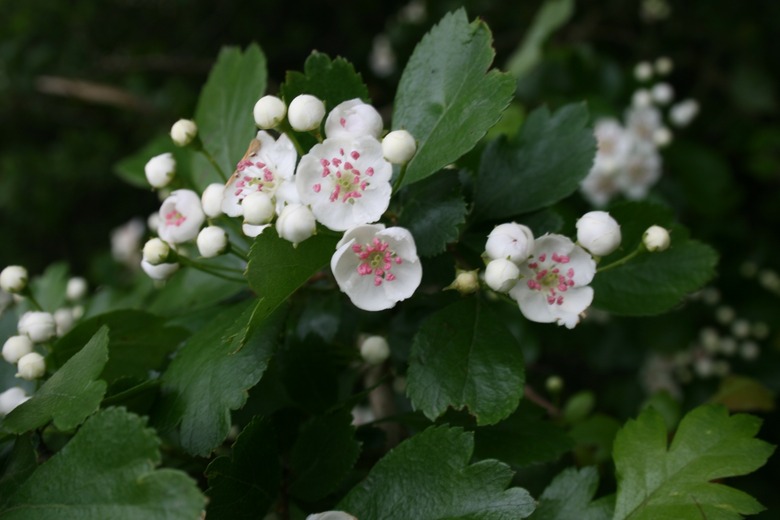Hawthorn Trees: Different Types And Common Diseases And Pests
Hawthorn (Crataegus spp.) are small deciduous flowering trees and shrubs in the rose family, Rosaceae, that are grown as ornamentals. Sometimes referred to as "hawthorne," they also produce fruit that is attractive to songbirds and in some cases are used to make jellies.
Hawthorn trees are hardy in USDA zones 3 to 8.
Species of Hawthorn Trees
There are approximately 380 species of hawthorn, most of which have thorns and produce clusters of white flowers. The flowers have five petals and resemble apple blossoms. They produce a fruit known as haw that birds enjoy.
Some species of hawthorn also offer attractive fall color. Most of these trees grow best in full sun. Let's look at a few examples of these small trees.
Native Hawthorn Species
**Scarlet Hawthorn:** Also known as the Ontario hawthorn, the scarlet hawthorn (Crataegus coccinea, zones 4 to 7) is native to eastern North America. This species has heights between 20 and 25 feet. The foliage has an orange or purplish red fall color.
**Cockspur Hawthorn:** The cockspur hawthorn (Crataegus crus-galli, zones 3 to 7) has low-hanging, horizontal branches and heights between 25 and 35 feet. It offers red and orange fall colors.
**Green Hawthorn:** The green hawthorn (Crataegus viridis, zones 4 to 8), which is native to the southeastern U.S., has heights between 20 and 35 feet. This species has fewer spines than other species of hawthorn and is believed to have greater resistance to certain diseases.
Non-Native Hawthorn Species
**English Hawthorne:** This species of hawthorn, often spelled "hawthorne," is the English hawthorn (Crataegus oxycantha, zones 4 to 7), which is native to Europe and North Africa. It has heights between 15 and 20 feet and is often used as a hedgerow.
Unlike most hawthorns, the English hawthorne tree can grow in shade. It does not produce significant fall color. While the species has white flowers, there are cultivars with pink and even red flowers available.
Hawthorn Plant Problems
Hawthorn plants are prone to a variety of diseases and pest infestations. Let's look at some common problems that affect species in this genus.
Diseases
Hawthorn trees, like many other species in the rose family, including other pome trees like crabapple, are susceptible to a bacterial disease known as fireblight that enters the plants through the blossoms. The bacteria is sometimes carried by pollinators.
Infected blooms and shoots wilt and die, creating a charred appearance that gives the disease its common name. Cankers may appear on infected branches and twigs, which can be pruned out to stop the disease from spreading to the main trunk, where it can be fatal.
Hawthorn trees are also prone to other diseases, including fungal conditions like cedar-hawthorn and cedar-quince rusts, which causes orange spots on leaves, as well as such as powdery mildew and leaf spots.
Pests
Hawthorn trees can become infested with pests, including aphids and scale, which are small insects that survive by consuming plant sap from leaves. Caterpillars, leaf miners and borers are also pests of hawthorn trees.
References
- Penn State Extension: Hawthorn – A Flowering Ornamental Tree
- North Carolina State Extension: Crataegus Rhipidophylla
- Missouri Botanical Garden: Crataegus Coccinea
- University of Minnesota Extension: Hawthorn – Crataegus spp
- Missouri Botanical Garden: Crataegus crus-galli
- Washington State University: Hortsense > Fact Sheets > Ornamentals > Ornamental trees > Hawthorn > Hawthorn Diseases > Hawthorn: Fire blight Hawthorn: Fire blight
- University of Minnesota Extension: Fire blight
- Missouri Botanical Garden: Crataegus viridis
- Penn State Extension: Hawthorn Diseases


